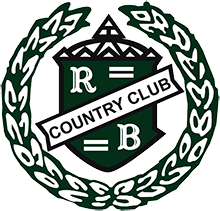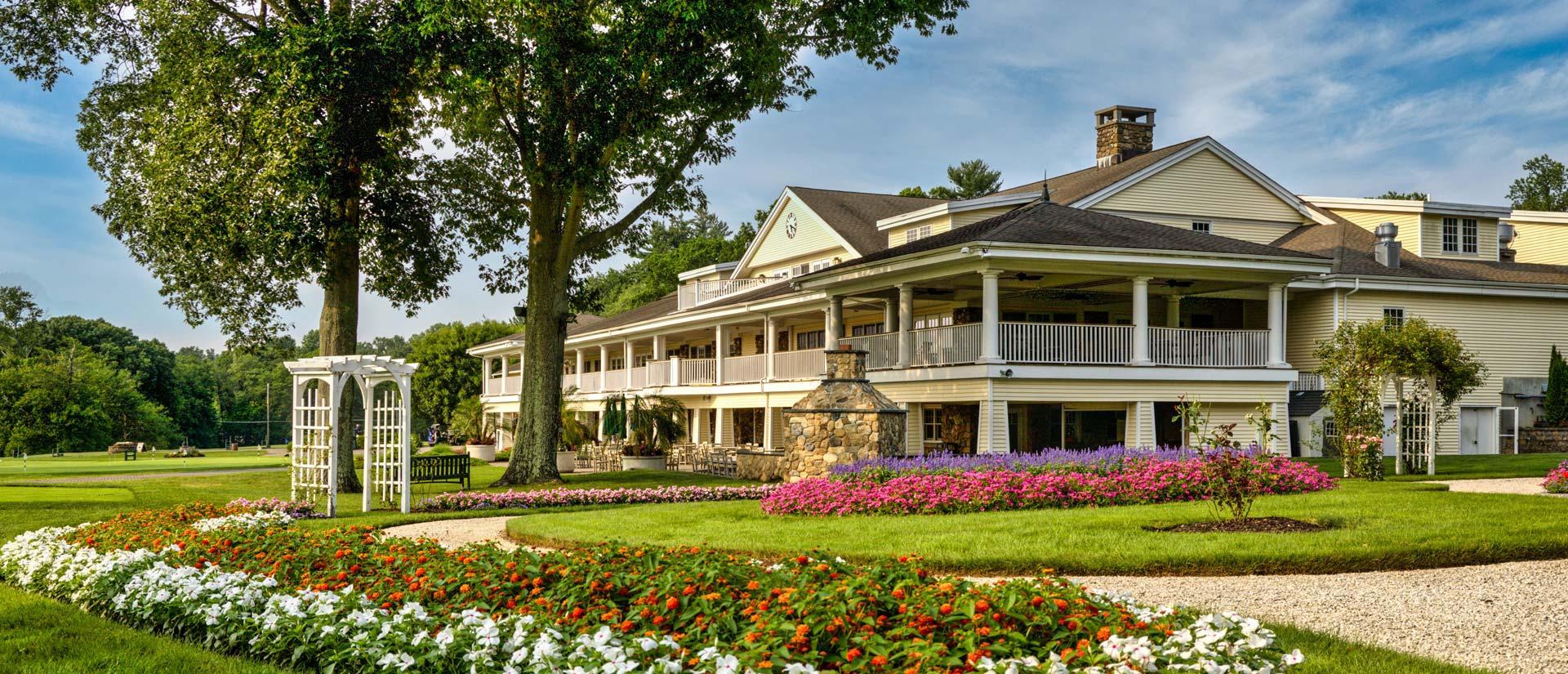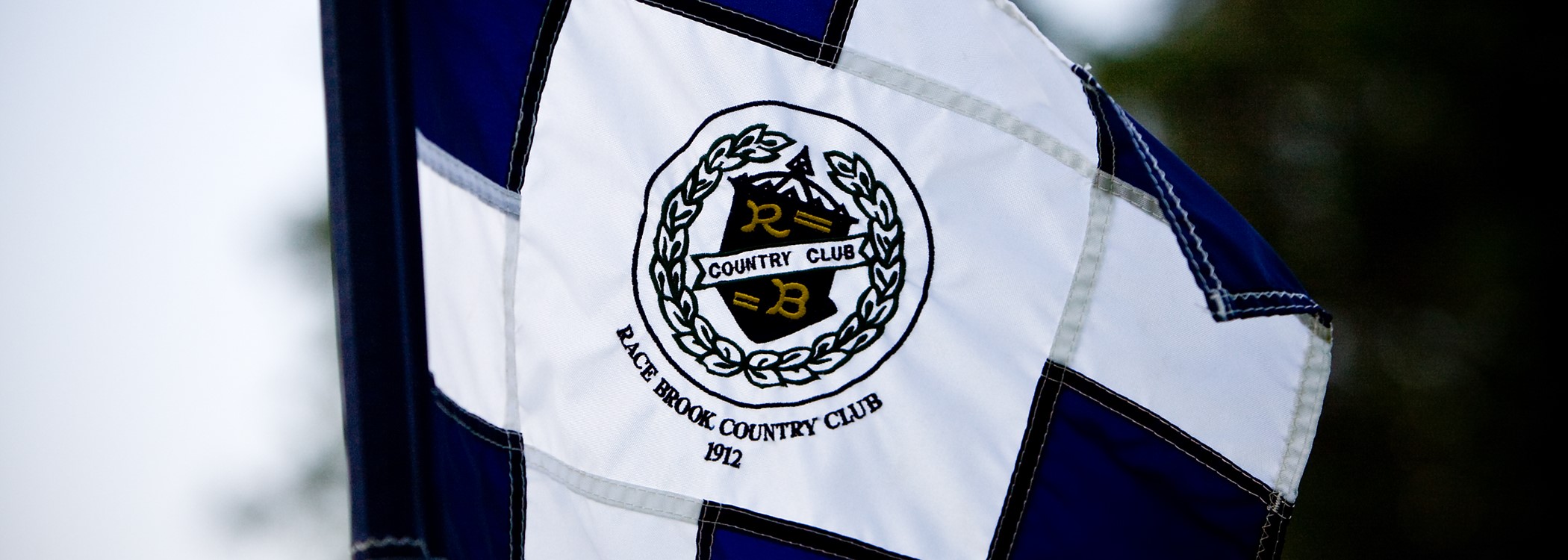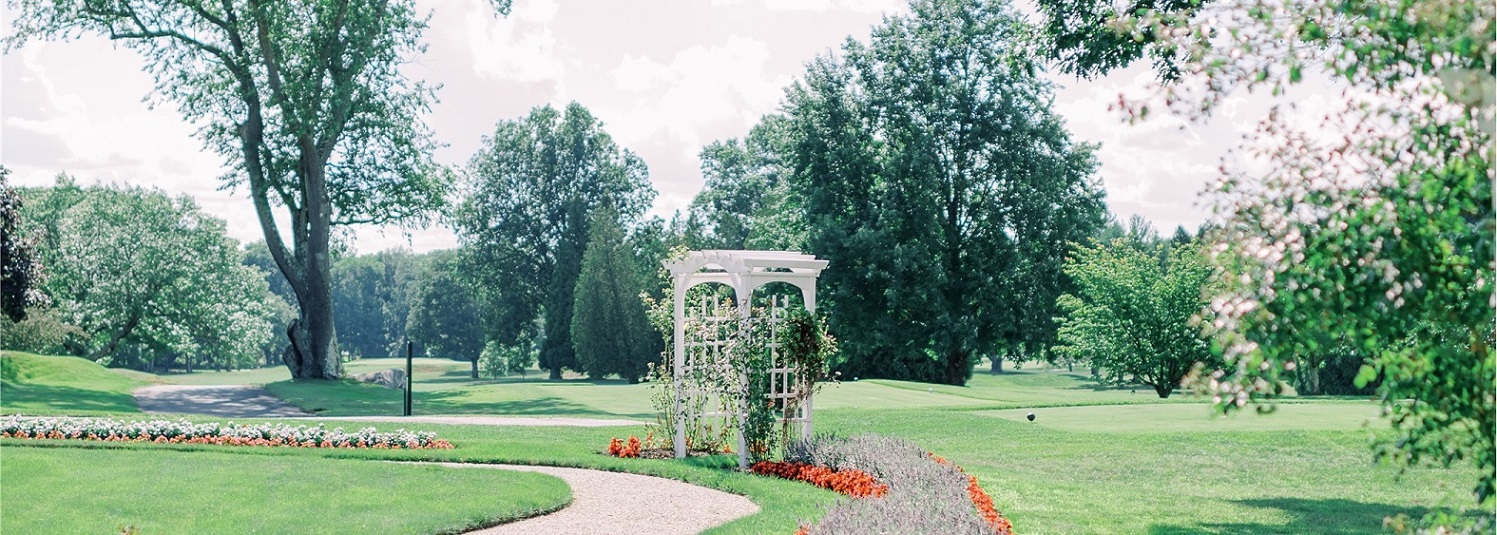Club History
Race Brook has a long and illustrious history and a golf course second to none. Having celebrated its Centennial in 2012, the Club can look back with pride on its history as it continues to provide its members and guests with golfing excellence and fellowships which are its hallmark.
In early January of 1912, a committee of prominent citizens from New Haven, Orange and Derby met at the Union League Club on Chapel Street in New Haven to discuss the organization and construction of a new golf course. On February 7, 1912, they formed the Race Brook Realty Company and on August 9, 1912, incorporated the Race Brook Country Club. Rollin S. Woodruff, who had served as Connecticut's Governor from 1907-1909, was elected as the club's first president.
In October of 1912, Yale University, represented by Mr. David Daggett of the Yale Athletic Association, purchased 300 shares of the Realty Company, thus beginning a fourteen year relationship with the University's golf team. Yale went on to win three intercollegiate golf championships with Race Brook Country Club as its home course until the Course at Yale opened in 1926.
The Directors of the Race Brook Realty Company, which had appointed a committee chaired by Robert D. Pryde to find suitable land, then authorized the purchase of one hundred and forty-five (145) acres of land east of Racebrook Road on which Mr. Pryde designed an eighteen hole golf course. Its clubhouse, designed by the architectural firm of Von Beren and Foote, was built by William Paterson, a member, at a cost of $23,000. Both the course and clubhouse opened on July 14, 1913.
Over the next ten years, Race Brook membership grew at such a rate that, in 1923, the club decided to add an additional 18 holes. In 1924, one hundred and twenty-five acres of land west of Race Brook Road were purchased with Mr. Pryde again providing his design services. The first nine of the new holes opened on July 16, 1925 and the second on September 23, 1926. However, in designing the "across the road" holes, Mr. Pryde linked nine of the original holes with nine of the new holes to form two continuous 18-hole courses which he referred to as the No.1 and No. 2 courses. The number 1 course consisted of holes 1 through 6 of the present O'Sullivan course, then crossed Race Brook Road with holes 7 through 15 proceeding clockwise around the perimeter of our present course, then re-crossing Racebrook Road to finish on holes 7 through 9 of the O'Sullivan.
The 36-hole configuration continued until 1943 when, under wartime conditions, declining membership and increasing maintenance costs forced the club to close the No.1 course. With the end of World War II and the growth of membership, in 1951 the club decided to reopen 9 holes of the No.1 course (then called the "inside nine"). The club still owns the land on which the nine holes of the No. 1 course west of Racebrook Road were located and, in 2012, the 9 holes were revealed as part of the "Hidden Nine" walking trail project as part of the club's centennial year activities.
Over the years, in addition to the course, the clubhouse has undergone a number of changes. In 1939, the lounge was redecorated when paneling, new furniture and rugs were purchased. In 1952 the south and west sides of the porch were enclosed to enlarge the dining room area. In 1964, a new pro shop, ladies locker room, and cocktail lounge were built. In 1984, an addition was built in order to increase the ladies' locker room space and at the same time, the pro shop was enlarged.
In 2001, much of the original clubhouse was razed, save the fieldstone columns and fireplaces, in order to build a modern, more spacious facility. The club's current 28,750 square foot clubhouse reopened in November 2002.
Significant changes to the clubhouse also came in 2009 as a result in a surge in membership. In the winter and spring of 2009, Race Brook added 85 new members, most coming from Woodbridge Country Club, which closed in January of 2009. As a result, the Board of Governors approved plans to demolish the Mixed Grille Room and the Men's Grille Room, which had been built as part of the 2002 clubhouse renovation. The two grille rooms were incorporated into what is today the Grille Room, which has double the seating capacity of the old Mixed Grille. The original wooden Race Brook Country Club crest, which had hung above one of the fireplaces in the clubhouse in the 1950's and 60's, was restored and mounted in the new Grille Room. The beautiful wooden bar that had been located in the Men's Grille Room was moved outside the clubhouse under the veranda and, along with an enclosure, became the Patio Bar.
The numerous trophy boards, so reflective of Race Brook's long history, which were in various locations in the clubhouse, were all moved to the main corridor leading to the Grille Room, creating a Hall of Champions. In 2010, the existing golf shop, last updated in 1984, was demolished and replaced with a shop beautifully designed by Procraft Golf from Bend, Oregon, one of the most respected shop designers and builders in the world. As part of the golf shop improvements, the bag room underwent a renovation as well to provide more capacity and efficiency, and a club fitting and repair facility was constructed in the cart barn to allow for better member service.
Also in 2010, the Halfway House, originally built in 1962, was completely renovated. A new roof and new windows were installed, as were new bathroom fixtures and kitchen equipment. The building was connected to municipal water for the first time, eliminating the use of portable toilets during the shoulder seasons.
These most recent renovations helped cement Race Brook's reputation as one of Connecticut's finest clubs-and one of the most enjoyable places in the area to spend time in a congenial atmosphere.
While Race Brook is named after the small brook which flows through the course, there is some uncertainty about how that stream itself was named. Popular legend has it that the early farmers who used this property as pasture land used to drive their herds to the area, then "race" their horses back home. When it came time to name this new club, Robert Pryde expressed the thought that "…the title "Race Brook" would be particularly in keeping with the legend of the competition that had existed hereabouts long before the great competitive sport of golf had reached America".
Since 1912, many well known professional and amateur golfers have played Race Brook. The professionals include Harry Vardon, Ted Ray, Walter Hagen, Gene Sarazan, Ben Hogan, Bryon Nelson, Patty Berg, Julius Boros and Tom Watson; the amateurs, Bob Hope, Tony Martin, Bing Crosby, and Jackie Robinson.
While not necessarily renowned for his golfing skill, our most famous member may well be President William Howard Taft, who joined Race Brook in 1913 and played regularly until he left New Haven in 1921 to become Chief Justice of the United States Supreme Court. Of our many other members, two in particular have achieved golfing fame, Charles Clare and Patricia ("Pat") Lucey (nee O'Sullivan).
Mr. Clare, an early member, was a regular winner of both Connecticut and New England tournaments, including the 1934 New England Amateur. Pat O'Sullivan, who joined Race Brook as a junior member in 1942, ascended far greater heights. She won the first of her record ten CWGA match-play championships in 1947. Thereafter, during her long career, Pat won three Connecticut State Amateur Championships, three New England Championships and was selected as a member of the 1952 United States Curtis Cup Team. While Pat also holds many other titles and honors, her crowning achievement, one that sets her apart from any other Connecticut woman golfer, is her victory in the 1951 Titleholders Championship, its then equivalent to the Masters. In recognition of her accomplishments, on September 28, 2008, Race Brook formally dedicated the "inside nine" in Pat's honor, naming it "the O'Sullivan".
In 2012, the club celebrated its centennial year. At the New Year's Day Open House, the club's remarkable 138-page history book, Race Brook Country Club, a Centennial History, was distributed to the several hundred members present. In April, the club arranged a Fireside Chat hosted by William Kelly, co-author of Golf at Yale and a professor at the University. Members enjoyed a lecture of the industrial and socioeconomic development of the greater New Haven area at the turn of the 20th century, coinciding with the evolution of golf in the United States - and Race Brook's role in the history. In May, members enjoyed an evening of "Stroll Down Memory Lane" hosted by Don Wade, noted golf writer and author of the club's centennial history book. A panel of longstanding members shared their favorite memories with the membership, followed by a wonderful dinner. In June, over 550 members, their families and invited guests enjoyed Centennial Family Night, including a remarkable fireworks display.
The final week of June, Race Brook hosted the 110th Connecticut Amateur Championship. It marked the sixth time in the club's 100-year history to have done so.
In August, the new Robert D. Pryde display cabinet was dedicated before many members, including our special guests, the Captain and Vice-Captain of Scotscraig Golf Club, Mr. Pryde's home course as a lad in his hometown of Tayport, Scotland.
On Saturday, August 11th, 2012, the club hosted the Centennial Gala with a grand reception outdoors followed by a dramatic procession of bagpipers up the 14th fairway to the clubhouse. The formal dinner and many speeches and presentations by distinguished guests followed in the beautifully decorated ballroom. Chief among the announcements, the formation of a sister club relationship between Race Brook and Scotscraig was formally read to the membership.
Fittingly, the club can look back with pride on its 100-year history and look forward as it continues to provide a wonderful private golf and country club experience for its members and their guests for many years to come.




